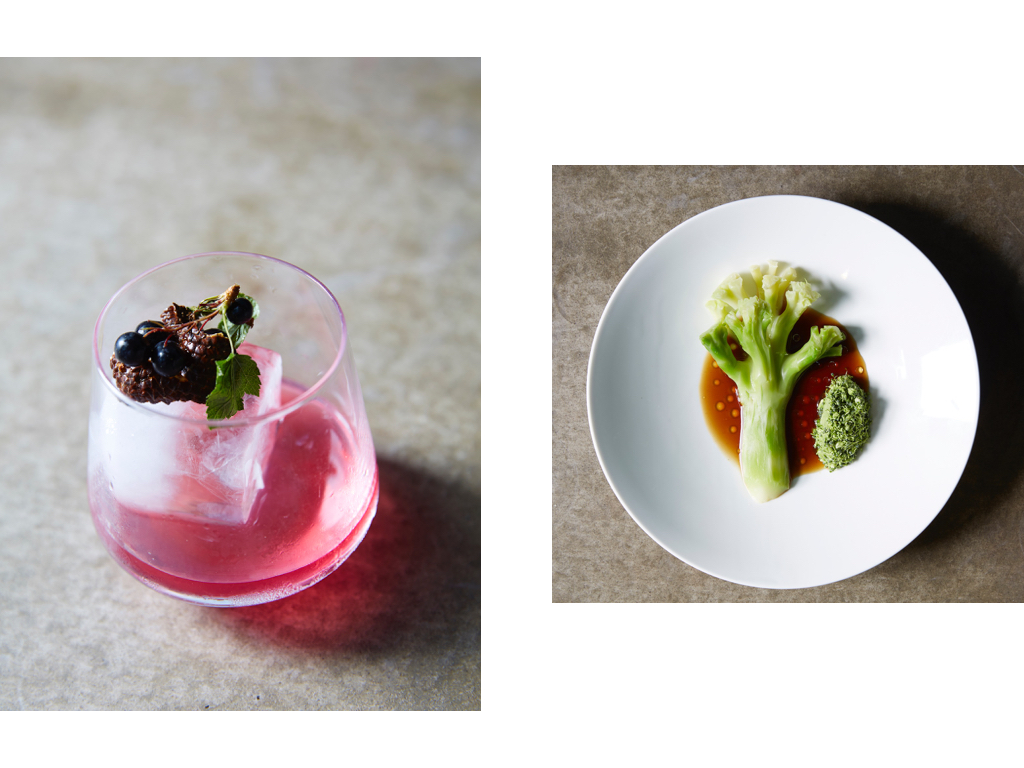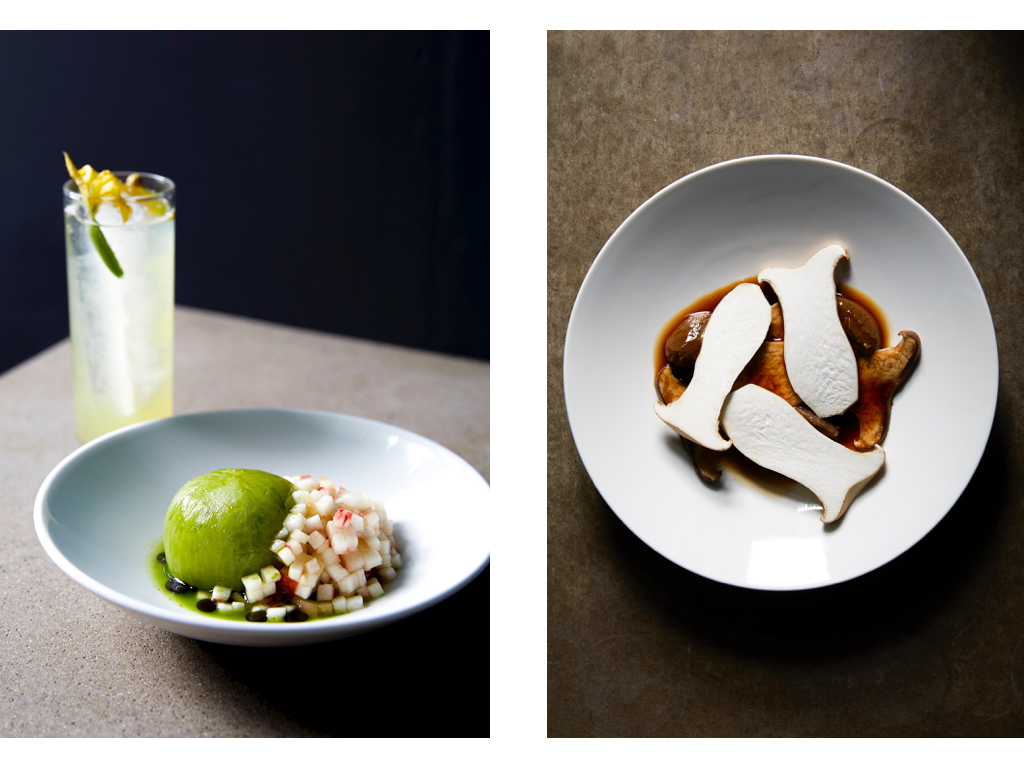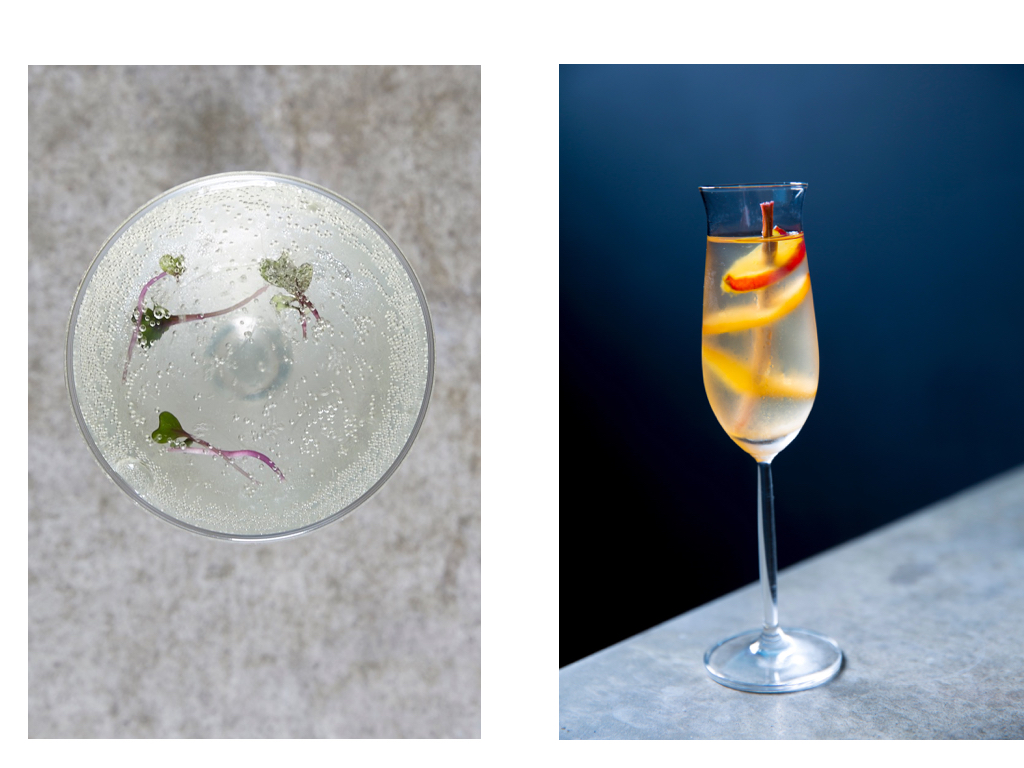When Ryan Chetiyawardana shuttered the pioneering White Lyan last spring, the London barman, distiller, and quasi-biochemist, best known for crafting zero-waste beverage programs all across town—from Selfridges’s Accessories Hall to the award-winning Mondrian hotel bar, Dandelyan—was determined not to let his progressive Shoreditch cocktail den remain dormant for long. On September 7th, that space reopens as Cub. (Super Lyan, Chetiyawardana’s other new bar, opened below it in April.) In collaboration with Brighton chef Doug McMaster, the duo conceived a theatrical, open-plan dining room, designed by Juliet Walmsley, where patrons watch from raised tables of recycled yogurt pots as bartenders and cooks prepare the tasting menus in a bar-kitchen hybrid stage below. Making use of the same spirits and ingredients, the tasting menu blurs the traditional lines between food and drink. Which is to say that it’s not a standard pairing. Some courses are a cocktail, others a dish, with a few comprising a combination of the two. All make use of closed-loop principles and sustainable practices, blending a library of Chetiyawardana’s custom-blended spirits with esoteric herbs and vegetables grown on-site in an ecosystem developed by Dr. Arielle Johnson, former resident scientist at Noma. Here, an exclusive first look at the opening menu.
London’s Next Boundary-Pushing Culinary Experience
An exclusive preview of Cub, cocktail guru Ryan Chetiyawardana and chef Doug McMaster's new concept that blurs the line between food and drink.
An exclusive preview of Cub, cocktail guru Ryan Chetiyawardana and chef Doug McMaster's new concept that blurs the line between food and drink.
Photos by Uyen Luu August 18, 2017

Mr. Lyan Scotch with Hereford blackcurrant, cobnut, and smoked-barley amazake
Chetiyawardana uses his own Mr. Lyan brand of scotch as a base for this cocktail, which serves as a segue into the main course. Blackcurrants add acidity, balanced by the creaminess of fresh young hazelnuts. “We use amazake (a sweet Japanese shake made from fermented rice) to give an umami bomb to the drink, allowing the flavors to remain on the palate for a long time,” he says.
Broccoli tree with broccoli florets and roasted seaweed dashi
“The florets are cut off and served raw, bound by a broccoli purée, and served with a perfectly tender stem,” Chetiyawardana says. The dish is finished with a rich dashi to complement the broccoli’s vegetal notes. “Broccoli is rarely considered a premium ingredient, and the core is too often condemned to the bin without a fair trial,” Doug McMaster adds, extolling the virtues of whole-food synchronicity. “Here it’s highlighted by dissecting the its many parts, refining, then reintroducing them together as one—to do more with less.”

Green tomato pine-brined with white peach, paired with Belvedere, greengage, chamomile, and cider vermouth
The tomato’s greenish hue comes from the salinity of the brining, but its flavor is balanced by the fragrant sweetness of white peach. “The drink is designed as a pairing and complement,” notes Chetiyawardana. While it possesses its own stark verdure, “it’s really its effervescence and a residual sweetness that trails into the food.”
King Oyster Mushrooms
This course explores the possibilities of King Oyster mushrooms, which are served here raw, brined and grilled, and fermented into paste. “Playing on the mushroom’s hidden behaviors, this dish is explosively meaty, enough to satisfy the most carnivorous eaters,” McMaster says. “The carbon footprint is as delicate as they come.”

Krug Champagne with water jelly and spiked herbs
“Our herbs are grown in a manner to affect their flavor,” he says. In this instance, he grew purple radish shoots in a chalk soil that mimics the specific terroir of Krug’s own vineyards. The shoots are then encased in water jelly and set afloat in a glass of Krug champagne.
Tea with compressed plum and rhubarb stem
A Malawi white tea that is lightly brewed to retain its bright acidity, then served with tea, compressed plum, and a stem made of rhubarb fibers. “This acts as a lightly boozy palate cleanser, and an uplift ahead of the final cocktails and sweet bites,” Chetiyawardana says.
